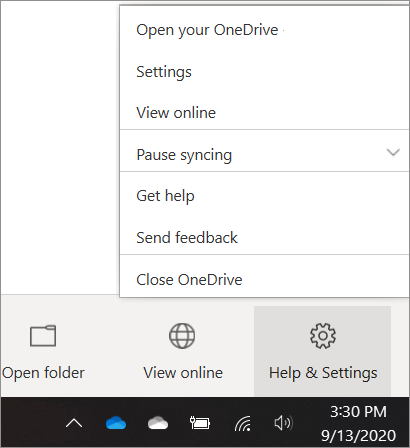How to Completely Uninstall OneDrive in Windows 10
 |
| How to Completely Uninstall OneDrive in Windows 10 |
OneDrive comes installed with Windows 10 and is enabled by default if you sign on with a Microsoft account. If you don’t use OneDrive, however, and don’t want it running in the background, there are some hoops you can jump through to disable it or get rid of it everywhere in Windows 10.
- Open Command Prompt in Administrator mode: Right-click on the Windows icon in the taskbar and select Command Prompt (Admin).
- Type in taskkill /f /im OneDrive.exe to terminate any OneDrive processes and hit Enter.
- Then type in either %SystemRoot%\System32\OneDriveSetup.exe /uninstall if you’re using 32-bit Windows 10 or %SystemRoot%\SysWOW64\OneDriveSetup.exe /uninstall if you’re using 64-bit Windows 10 and hit Enter.
Turn off, disable, or uninstall OneDrive
If you want to stop syncing for a short time, learn How to pause and resume sync in OneDrive.
If you want to stop syncing a file, read How to stop or cancel sync in OneDrive.
If you want to remove an OneDrive folder from your computer, follow the steps in Choose which OneDrive folders to sync to your computer.
If you want to cancel your OneDrive subscription, see How to cancel your Microsoft subscription.
If you want to sign out of OneDrive on the web, select your profile photo, then select Sign out.
If you just don't want to use OneDrive, the easiest solution is to unlink it.
Unlink OneDrive
You won't lose files or data by unlinking OneDrive from your computer. You can always access your files by signing in to OneDrive.com.
Select the white or blue OneDrive cloud icon in the taskbar or menu bar.

Note: You might need to click the Show hidden icons arrow next to the notification area to see the OneDrive icon. If the icon doesn't appear in the notification area, OneDrive might not be running. Select Start, type OneDrive in the search box, and then select OneDrive in the search results.
Select
 Help & Settings > Settings.
Help & Settings > Settings.
On the Account tab, click Unlink this PC and then Unlink the account.
Hide or uninstall OneDrive
On some versions of Windows, you can also hide or uninstall OneDrive. You can also uninstall the OneDrive mobile app from Android and iOS devices.
You won't lose files or data by uninstalling OneDrive from your computer. You can always access your files by signing in to OneDrive.com.
Windows 10
Select the Start button, type Programs in the search box, and then select Add or remove programs in the list of results.
Under Apps & features, find and select Microsoft OneDrive, and then select Uninstall. If you're prompted for an administrator password or confirmation, type the password or provide confirmation.
Windows 8.1
The OneDrive app comes with Windows 8.1 and Windows RT 8.1 and cannot be uninstalled.
Windows 7 or Windows Vista
Click the Start button, then in the search box, type Add Programs, and then, in the list of results, click Programs and Features.
Click Microsoft OneDrive, and then click Uninstall. If you're prompted for an administrator password or confirmation, type the password or provide confirmation.
Android devices
Go to Settings and select Storage/Memory.
Select OneDrive and tap Uninstall.
iOS devices
Go to the Home Screen, tap, and hold on the OneDrive app icon
Tap X that appears in the upper left corner of the app icon.
macOS
Just drag the OneDrive app to the Trash.
0 Comments: